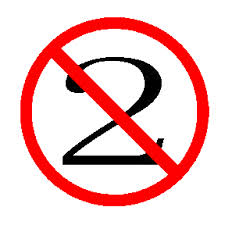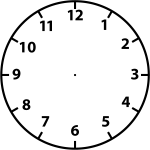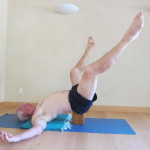 The microcosmic orbit encompasses two of the eight extraordinary vessels recognized in Chinese Medicine; the yin Ren Mai or Conception Vessel, and the yang Du Mai or Governing Vessel. These two complete a balanced circuit linking both front and back, and inner and outer bodies, and also hold energy in support of the traditional twelve organ channels commonly used in acupuncture. (These include the six yin organ channels: lungs, spleen, heart, kidneys, liver, and heart protector (pericardium); and the six yang channels; large intestine, stomach, small intestine, bladder, triple heater (sanjiao) and gall bladder.)
The microcosmic orbit encompasses two of the eight extraordinary vessels recognized in Chinese Medicine; the yin Ren Mai or Conception Vessel, and the yang Du Mai or Governing Vessel. These two complete a balanced circuit linking both front and back, and inner and outer bodies, and also hold energy in support of the traditional twelve organ channels commonly used in acupuncture. (These include the six yin organ channels: lungs, spleen, heart, kidneys, liver, and heart protector (pericardium); and the six yang channels; large intestine, stomach, small intestine, bladder, triple heater (sanjiao) and gall bladder.)
The microcosmic orbit meditation awakens the flow of Qi in the two vessels, but can also point out blockages in the circuit. And these circuits and blockages have layers and levels. One of my first awakenings when I began exploring this was the amount of glue I felt along the back or Governing Vessel. Using the clock image below, my key areas of tension are around 2  o’clock behind my heart, and around 4 o’clock, or the region of my kidneys.
o’clock behind my heart, and around 4 o’clock, or the region of my kidneys. 
To no surprise, this tension is manifesting as an elevation of my blood pressure. And there are similar regions of tension on my front, along the Conception Vessel, between 8 and 10, up into the 5th chakra.
When my PTSD was activated in January, after the fire, the primary locus was on the front, near CV-12, the center of centers, (nine o’clock above). My yin blocked up and the yang tightened even more, preventing me from sleeping normally and doing a number on my nervous system (yang) and psyche. It took about a month, with lots of help from friends and various therapies, for my sleep pattern to settle back to some sort of equilibrium. It has been re-triggered twice since then, once in May and then again last week, and on both occasions, the initiating factor was acupuncture needling at CV-12.
PTSD activation is a very unpleasant experience filled with fear-based, chaotic energies disrupting my moment to moment experience. Fortunately, my process is mutating, the energy is finally moving, and my overall capacity to make sense of the process and hold it in open awareness is evolving. I am grateful for the Somatic Experiencing work I did years ago with Caryn McHose. This therapy, first articulated by Peter Levine, requires building strong ‘resources’, or regions of somatic strength and stability, that can anchor you during the release of the trauma. Other key principles in SE include not releasing more trauma than you can handle with your resources, and finding the support and guidance of an SE practitioner who can hold the space of open awareness and presence, help you track the sensations, and recognize that they are memories from the past that you are feeling in the present with some spaciousness.
I’ve been my own SE support this time around, which is challenging, but there is progress and it is my on-going sitting meditation practice that is my primary resource. Resting in Pure Awareness, even as the mind/body are doing their dance, requires a lot of trust, because most of the ‘time’, the practice doesn’t seem very ‘silent’. The mind field is a busy place. But the silence is ever -present, independent of what is arising, and this trust/faith that you are being held by the Divine, called shraddha by Patanjali (sutra I-20), is your most important strong resource. As a meditator, this begins as a ‘non-judgmental witnessing consciousness’
As Swami Dayananda taught me years ago, our moment to moment experience, observed formally in meditation, has two components. The first is Awareness, aka Pure Awareness, Purusha, Ground of Being, Luminous Emptiness, Stillness, or Witnessing, etc. The second is ‘What is arising in Awareness’. This includes all the transitory phenomena of sensation, perception, action and thought, or what we call ‘reality’. If we can sustain some dimension of the witnessing, then what arises doesn’t fully take over the mind field, but can be held and examined by the intelligence, known as buddhi in Sanskrit.
‘What arises’ has layers and levels and this is where the suffering and/or liberation takes place. Awareness is always free and unbounded. The first level of ‘what is arising’ is pure sensation, a triggering of the sensory nervous system by an impulse of energy. At the reflexive level of the nervous system, this sensation may immediately trigger an an action, as when a doctor taps your knee to check on your ‘mono-synaptic’ response. The knee-jerk tells the doctor your spinal nerves are working.
A fun piece of trivia I’ve retained from my MIT biology days is that frogs have a neuron in the retina that only fires when a black dot moves horizontally across the visual field. If triggered, a muscle at the root of the tongue fires and the tongue extends out to ‘capture’ the dot. No interpretation or deliberation is required. More primitive creatures have mostly reflexive nervous systems. Not a lot of thinking or analyzing goes on in the lower brain.
As evolution expanded the brain, a new type of brain cell, the inter-neuron, appeared, allowing the possibility of pausing, deliberating and/or analyzing the sensation before acting. This allows learning, and more and more nuanced responses to take place. Humans have lots of inter-neurons, and this scientific reality is what allows us to get lost inside our own heads. Our attention is drawn to the various loops of non-stop thoughts, beliefs and confusion flowing through neurons not directly connected to our moment to moment experience and this inner dialogue become our day-to day reality. This is the monkey-mind noticed by mediators. What is actually arising moment to moment is totally missed. When the PTSD kicks in, the mind reels in desperate attempts to escape, and the practice is to just notice the actual sensations, in the moment, however, wherever. The body wants to process and return to balance, but staying present to its information allows the body to reveal its innate intelligence
 Any mindfulness practice will help develop the capacity to stay present so matter what by directing the attention to the sensations of the body as they arise, before interpretation kicks in. B. K. S. Iyengar did his best to teach me this. His constant lesson to me: Stop thinking about what was supposed to be happening in a yoga pose, or how it felt yesterday. Start actually feeling the sensations and tracking them and let them dictate the action of the pose. That did not happen over night for me! (A full articulation of his teaching on this is included in the 2 part ‘Samyama in Asana’ posting. Part1 and Part 2.)
Any mindfulness practice will help develop the capacity to stay present so matter what by directing the attention to the sensations of the body as they arise, before interpretation kicks in. B. K. S. Iyengar did his best to teach me this. His constant lesson to me: Stop thinking about what was supposed to be happening in a yoga pose, or how it felt yesterday. Start actually feeling the sensations and tracking them and let them dictate the action of the pose. That did not happen over night for me! (A full articulation of his teaching on this is included in the 2 part ‘Samyama in Asana’ posting. Part1 and Part 2.)
Our use of the micro-cosmic orbit is a great way to organize and train our attentional field to lock into the flow of energy (qi or prana) and track it in and through regions of the human energy field. This practice builds stability of the mind (abhyassa) and frees up the organic field to improve not only health, but spiritual sensitivity through cosmic resonance with the life forms and energy field of Mother Earth and the celestial realms of the sun moon, stars and galaxies. To the Taoists, the micro-cosmic field is an immediate and conscious expression of the macro-cosmic field including all layers and levels of creation.
 What other resources can we find within the micro-cosmic orbit? In previous posts we have explored the whole circuit, with the lower dantien as the root of our practice. We want to continue to deepen the connection to the lower dantien by breathing with the 4 points on the diagram below, CV-1, GV-4, CV-12 and CV-6, as if this is a small circle, and then expand into a dynamic sphere. Feel your tail and lower limbs being embraced by this to strengthen the grounding. You can do this as a meditation or breathing practice, or even add it to any asana you may be exploring. We are working with 3 dimensional volumes here!
What other resources can we find within the micro-cosmic orbit? In previous posts we have explored the whole circuit, with the lower dantien as the root of our practice. We want to continue to deepen the connection to the lower dantien by breathing with the 4 points on the diagram below, CV-1, GV-4, CV-12 and CV-6, as if this is a small circle, and then expand into a dynamic sphere. Feel your tail and lower limbs being embraced by this to strengthen the grounding. You can do this as a meditation or breathing practice, or even add it to any asana you may be exploring. We are working with 3 dimensional volumes here!
Next, join the lower dantien with the middle dantien in your breathing practice. You can do this in two sections like this: inhale lower 1-2-3, upper 4-5; exhale lower 1-2-3, upper 4-5. Feel the diaphragm softening as it is supported above and below. Try other combinations until you find something that feels right for you. Upper dantien stays quiet, like in any breathing practice.
A more challenging, but fascinating option is to have three sections/parts, like Viloma Pranayama. Section 1 is the lower burner, or the bottom 2/3rds of the lower dantien; section 2 is the middle burner which is the liver/stomach/spleen/pancreas, or the abdominal organs inside the lower ribs. Section three is the area of the chest above the diaphragm, heart and lungs etc. Keep the primary in the lower. Inhale lower 1-2-3, pause middle 4-5, pause upper 6; exhale lower 1-2-3, pause, middle 4-5, pause upper 6. Or something like that. Like the shape of a snowman, only no head, three torso sections.
Working in Segments:
 Another option is to use the circuit to look more closely at various segments or arcs to see the where obstructions manifest in our embodied energy field. If we imagine the circle as a clock face, we can use the numbers to define some of these regions.
Another option is to use the circuit to look more closely at various segments or arcs to see the where obstructions manifest in our embodied energy field. If we imagine the circle as a clock face, we can use the numbers to define some of these regions.  Looking from the left side as above, 9 is the front and 3, its complement at the back, passing right through the third chakra, or more specifically, CV-12, the ‘center of centers’ directly connecting with the middle burner. What has worked best for me is to by-pass CV-12. When I can link GV-9 to GV-4 and GV-1 ( not shown but at the tip of the coccyx) and through to CV-1, my back softens and opens somewhat. As a down the back inhalation, I can feel the kidneys grasping the qi as GV-4 and GV-9 work together to ground the breath at the root.
Looking from the left side as above, 9 is the front and 3, its complement at the back, passing right through the third chakra, or more specifically, CV-12, the ‘center of centers’ directly connecting with the middle burner. What has worked best for me is to by-pass CV-12. When I can link GV-9 to GV-4 and GV-1 ( not shown but at the tip of the coccyx) and through to CV-1, my back softens and opens somewhat. As a down the back inhalation, I can feel the kidneys grasping the qi as GV-4 and GV-9 work together to ground the breath at the root.
Similarly, if I can link CV-17 with CV-6 and CV-1 in a down the front action and link this to GV-1, I can feel a stabilizing of my front body to help support the softening back body. This ‘abdominal tone’ that arises from this circuit gives a presence to your sitting posture that is yin (internal and front body) which helps allow the witness to rest in stillness. Too much use of the back muscles keeps a yang inner state, a bit less conducive to quietness.
And please add any and all of these suggestions, plus your own that arise when you practice, to any pose, any time, when on the mat, sitting at your computer typing, in your car, walking about. Make it part of your moment to moment awareness. This is the neuro-plasticity that really is the core of the practice we do as awakening humans embedded in the cultural, relational fields. We can change how are brains are wired and this changes the field of the whole, as we are the field.
And, a question for all to ponder, How can we continue to speak-out and protest the stupidity, ignorance and violence being perpetuated by our government and segments of society without demonizing anyone??? This is no simple answer to this, but we have to use our intelligence and spiritual insight to find other options. The demonization of others is  the primary problem of our times and the cause of all the suffering. We have political leadership that uses this ‘demonization of others’ to rally its base. As long as ‘liberals’ get sucked into the same insanity by ‘demonizing the demonizers’, there is zero chance of moving into a more progressive society. The first principle of Taoism, and Buddhism, and Vedanta is wholeness. There is no other;ther is only us. And we, the collective are seriously out of balance. The wisdom of the body knows this, and that is why embodied spiritual practice is so crucial to our times.
the primary problem of our times and the cause of all the suffering. We have political leadership that uses this ‘demonization of others’ to rally its base. As long as ‘liberals’ get sucked into the same insanity by ‘demonizing the demonizers’, there is zero chance of moving into a more progressive society. The first principle of Taoism, and Buddhism, and Vedanta is wholeness. There is no other;ther is only us. And we, the collective are seriously out of balance. The wisdom of the body knows this, and that is why embodied spiritual practice is so crucial to our times.
Keep practicing !!!!!






















